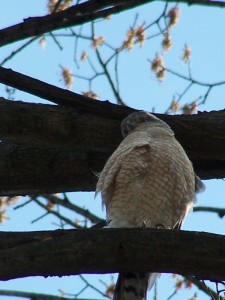I’ve added a couple of links to “Natural Heritage”, two films I saw recently and highly recommend. The first is Milking the Rhino which is a documentary about the “community conservation” practiced by the Massai and Himba communities in Kenya and Namibia. This film is tremendously thought-provoking. When I was doing research in Cebu a couple of years ago, I learned that fishermen from local barangay, villages, sometimes fought over fishing rights and raids while the reefs were being depleted. Their plight opened my eyes to the need for a kind of conservation that dealt practically and compassionately with people, animals, and sustainable economics. I once heard a journalist interviewing Native Americans on a Res who said (and I’m paraphrasing here) that they felt very hurt and bewildered at how American environmentalists cared more about the butterflies and animals, but never once lobbied for their community of people who live (on a subsistence level) on the land. I’d add that the land rights were originally theirs. It’s so complicated.
Milking the Rhino shows just how complicated it can all be — the tangle of race relations, colonial history, poverty, women’s place in traditional society, and conservation. This film is honest. It interviews Himba women, Massai men, European eco-tourism business owners, African conservationists like fiercely eloquent Helen Gichochi, European tourists, and an expatriot who started his own wildlife preserve. It shows all the rough edges and also shows people (from all parties) being challenged, undergoing transformation as they figure out how to change their relationship to the wild ecosystem and their natural resources. I really dig that it’s raw and that people, in the end, seem to learn how to work with each other despite not always agreeing. Can there be win-win-win solutions? Yes, I think Milking the Rhino shows there can.
The second documentary I’d recommend is Arctic Dance, narrated by Harrison Ford. (Okay, ya got me – I’m still an Indiana Jones fan at heart, pulpy and antiquated as it is.) This film chronicles the life and impact of Margaret (“Mardy”) Murie, who is known as the Grandmother of the American conservation movement. She and her husband, Olaus, worked tirelessly to establish the Arctic National Wildlife Refuge. She was riding dog sleds and trekking across Alaska’s tundra, punting on rivers (baby in tow) when it was unheard of for a woman to be doing these things. Mardy was the first woman to graduate from the University of Alaska, Fairbanks. She often worked as Olaus’ secretary, and seemed, by nature, to be a behind-the-scenes kind of person. But after he died, she gently took to the microphone to lobby in Washington, D.C. for the wilderness they both explored and loved. President Clinton awarded her the Presidential Medal of Freedom for her work.
What’s touching about Mardy is how humble she was about her own role making environmental history. It’s as much a love story as it is a piece of American history. She truly makes the personal political — it seems to me that she loved the land and terrain of Alaska where she grew up and she shared this with her dearest love, Olaus. There’s a solitude, and solid peacefulness to their existence. And the humility she shows is the mark of a truly great spirit. A gentle strength — I love that. Plus, come on, now, she shows that elder women rock. What a role model.
Milking the Rhino and Arctic Dance, two really different takes on conservation. Check them out if you can!
~ MGB

